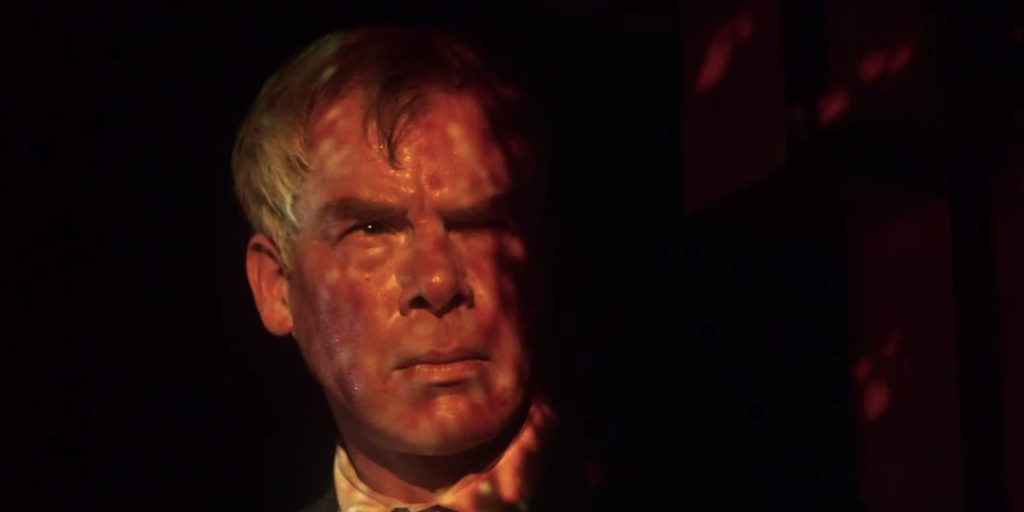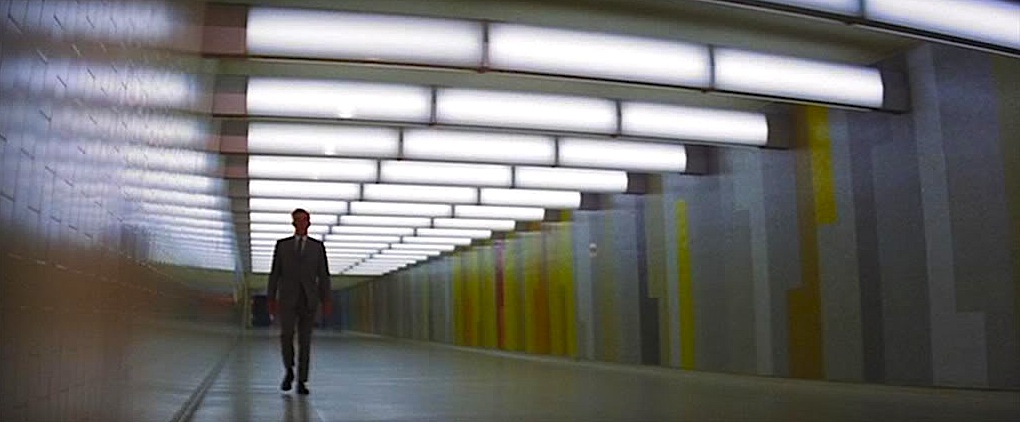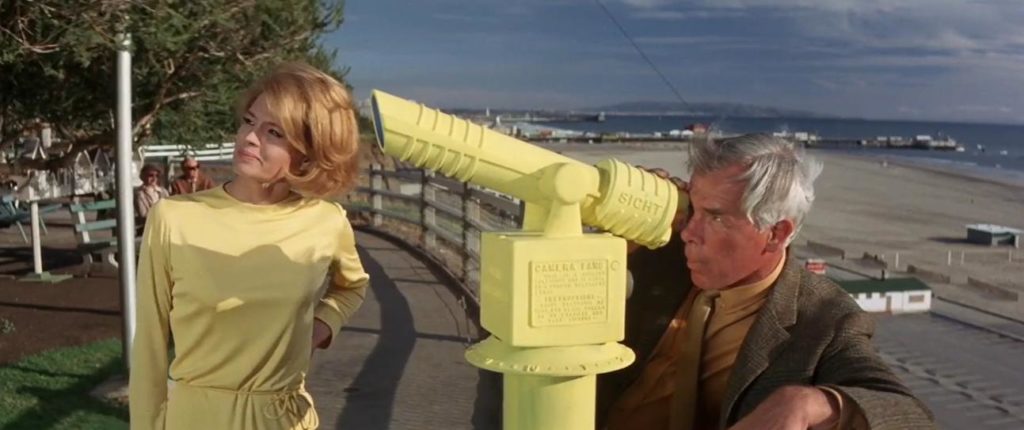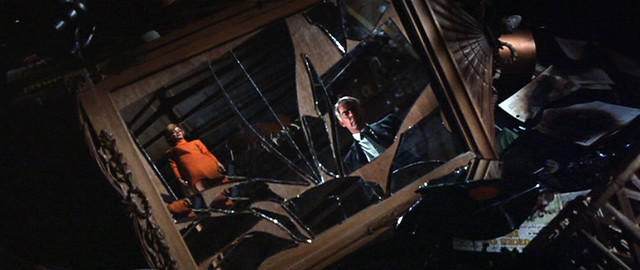| Matt Clark |

Point Blank plays at the Trylon Cinema from Friday, June 9 through Sunday, June 11. Visit trylon.org for tickets and more information.
A professional thief left for dead after a job gone sour pursues the people who betrayed him and extracts his payback, no matter the collateral damage. It’s a classic hardboiled scenario and one that practically exploded from the pages of The Hunter, the first of 24 Parker novels written by Donald E. Westlake under the pseudonym Richard Stark. The Parker character, a revered cult figure in crime fiction circles, would be adapted for the big screen at least eight times and portrayed by actors as diverse as Mel Gibson, Jim Brown, and Anna Karina. However, none of those adaptations comes as close to capturing the grit and ferocity of Westlake’s stories as 1967’s Point Blank. Director John Boorman and lead actor Lee Marvin distill elements of Parker, enhance Westlake’s nonlinear narrative style, and produce a powerfully cinematic tale of revenge that remains an essential piece of the American neo-noir canon.
His hands, swinging curve-fingered at his sides, looked they were molded of brown clay by a sculptor who thought big and liked veins. … His face was a chipped hunk of concrete, with eyes of flawed onyx.
The most obvious asset working in Point Blank’s favor is Lee Marvin himself. Westlake claimed to be thinking of grim-visaged actor Jack Palance when he wrote Parker, but Marvin’s distinctive countenance and raw physicality as a performer work perfectly for the professional hard man (renamed Walker for Point Blank). Marvin was the crucial element to the film being made at all, as well as the degree of control he and Boorman had on the film. Point Blank’s producers were pursuing Marvin as a box office draw and conceded director approval, script approval, and final cut to him. Marvin granted the latter to Boorman. John Boorman was largely unknown, having worked in television and directed Catch Us If You Can—the Dave Clark 5’s answer to A Hard Day’s Night. Still, he was an emerging talent and Marvin was interested in his ideas. Boorman and Marvin dispensed with the original script and developed their own 70-page treatment of Westlake’s novel. Equipped with this lean shooting script and a sensibility born as much out of European arthouse as American film noir; the resulting picture is less a commercial thriller and more an abstract meditation on memory, death, and obligation.

Westlake’s Parker stories are notable for their brutality, their detailed explanations of criminal underworld operations, and their unique non-linear structure. Shifting points of view from character to character, they create suspense and revealing intrigue by jumping back and forward in time. Boorman seized on those non-linear aspects of Westlake’s writing and infused a dreamlike structure to his film via editing, sound, and color. Point Blank opens immediately with a flashback to Alcatraz, revealing the details of Walker’s betrayal by his partner Mal and wife Lynn—played by Canadians John Vernon and Sharon Acker—and then transitions to a montage of still images showing Walker’s escape from the prison island. The action then flashes forward to Walker embarking on his mission of vengeance and time shifts continue to interrupt the main plot as Walker is flooded with memories while he pursues his betrayers. The disjointed structure allows for transitions and overlapping of both time and physical space. One of the most indelible scenes in the film is the sequence of Walker furiously marching towards the camera as his footsteps echo in a hallway. The footsteps continue as the action transitions to Lynn who seemingly (impossibly) reacts to the sound of Walker’s approach leading right to her doorstep. This is a technique Boorman would use again in Excalibur when Arthur’s knights somehow “hear” the film soundtrack as Mordred’s army bears down on them.
Point Blank was Boorman’s first work in color and initially the film seems rather muted and washed out. Everything in Lynn’s apartment is pale and gray including Walker and his suit. As the film progresses more color is introduced but in a very intentional, monochromatic way. When Mal appeals to higher ups in the “organization” for help with Walker, they meet in green offices and all the men are wearing green clothing. Lynn’s sister Chris, played by Angie Dickenson, introduces the color yellow when she enters the film; Boorman worked with some of his old television partners to repaint entire locations to emphasize this. Walker continues to metamorphize through the various palette shifts (where his suits come from is never made clear), frequently blending into his surroundings or stepping into shadows. A fight between Walker and Mal’s goons takes a particularly psychedelic turn backstage at a nightclub with multicolored projections and improvisational jazz played over the action. It’s the kind of staging that would be more at home in a Seijun Suzuki film than an MGM crime drama.

He didn’t know if he was going to make it, if he was going to hold up the syndicate and get away with it, and he didn’t really care. He was doing it, and rolling along with the momentum, and that was all that mattered.
Stylistic bravura aside, it’s fair to interrogate the deeper meaning of Point Blank beyond its value as a thriller. At the time, Bosley Crowther wrote that the unconventional structure of the film was “likely to engross the viewer without edifying or enlightening him” (Crowther 1967). However, since the initial release there has been much conversation over the true nature of Point Blank’s narrative, particularly whether Walker had died or not before the action begins. Walker’s very existence is questioned throughout the film with each person he’s introduced to thinking he’s dead. In a moment of disgust at Walker’s singlemindedness, Chris directly accuses him: “You died at Alcatraz, alright.” The dreamlike transitions and constant flashbacks contribute to the unreality of the story, but Walker’s own behavior—moving like a shadow through scenes often unseen by others, talking as sparingly as possible, and only smiling or laughing in memories—impart a definite spectral quality to him. There’s also the character of Yost, played by Keenan Wynn, who appears to be a law enforcement officer interested in Walker’s revenge to injure the LA underworld. Yost is as much of a phantom as Walker; he appears with no explanation and knows who Walker is immediately, rarely interacts with anyone else in the film, and has preternatural knowledge of the workings of the organization. Terrestrial explanations can be found for Yost, but there’s an element of otherworldliness to it all. Is Walker a ghost? Is this all the dream of a dying man? Boorman refuses to answer this directly but has mentioned that Marvin’s own emotional history, that of a young man experiencing the trauma of war and how those memories affected him, was worked into how he played Walker. Even if Walker and Yost aren’t truly apparitions, Point Blank is about the ghosts of the past and how they drive the present or how vengeance can possess a person’s spirit until life loses its meaning.
Whether or not you appreciate Point Blank as “…a sheer exercise in creeping menace and crashing violence,” as Crowther called it, or a fascinating convergence of arthouse and genre picture, there can be no doubt that it’s a thrilling watch and a pure cinematic experience. Boorman likely said it best when asked about the film: “What it is, is what you see.”

WORKS CITED
Crowther, Bosley. “Vengeful Lee Marvin in Point Blank,” The New York Times. September 19, 1967, https://www.nytimes.com/1967/09/19/archives/vengeful-lee-marvin-in-point-blank.html (accessed May 26, 2023)
Edited by Olga Tchepikova-Treon
